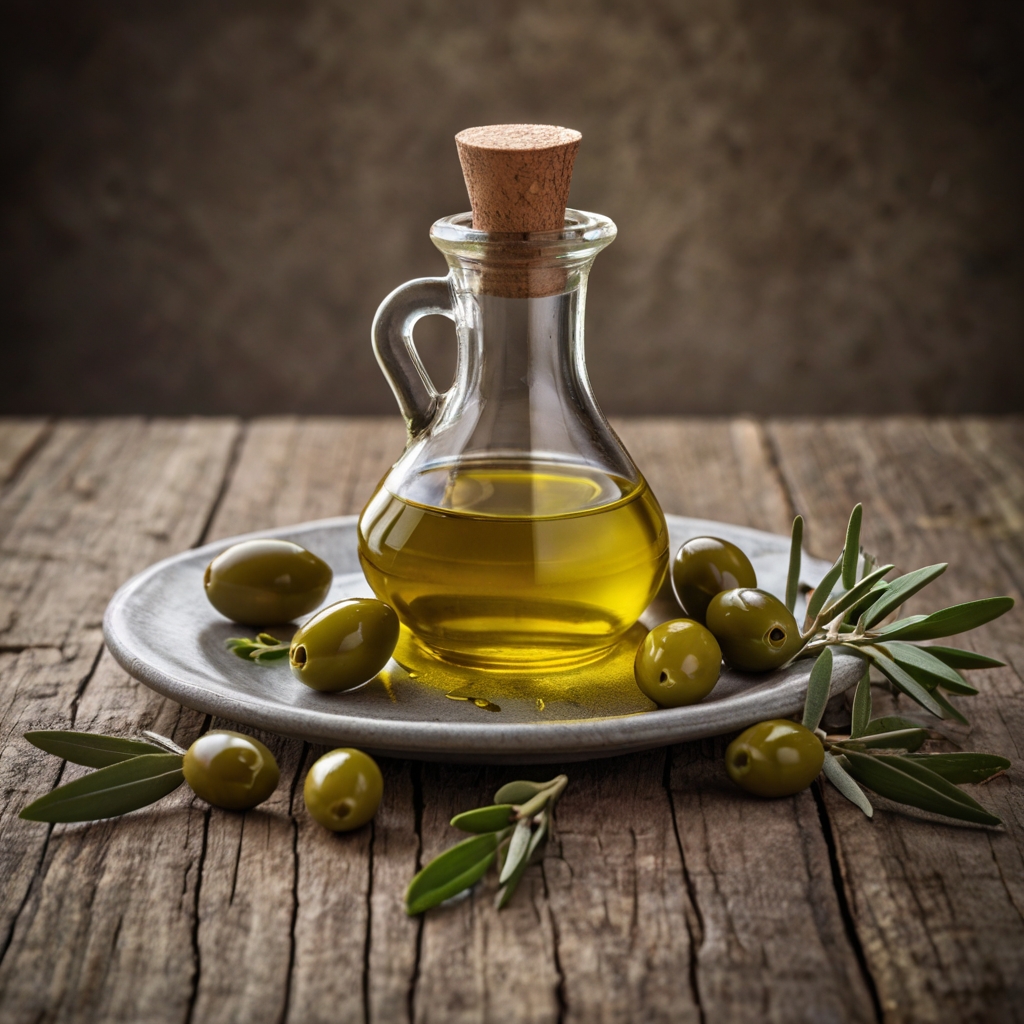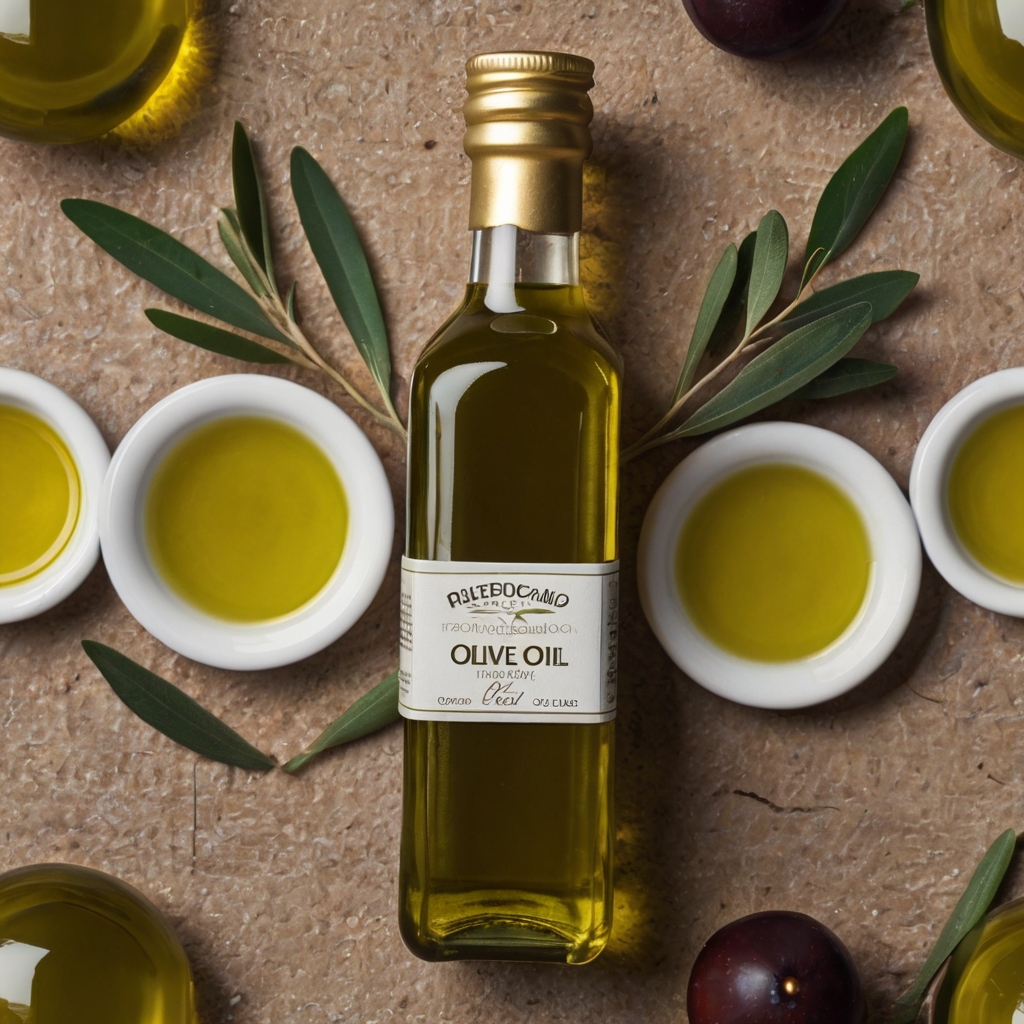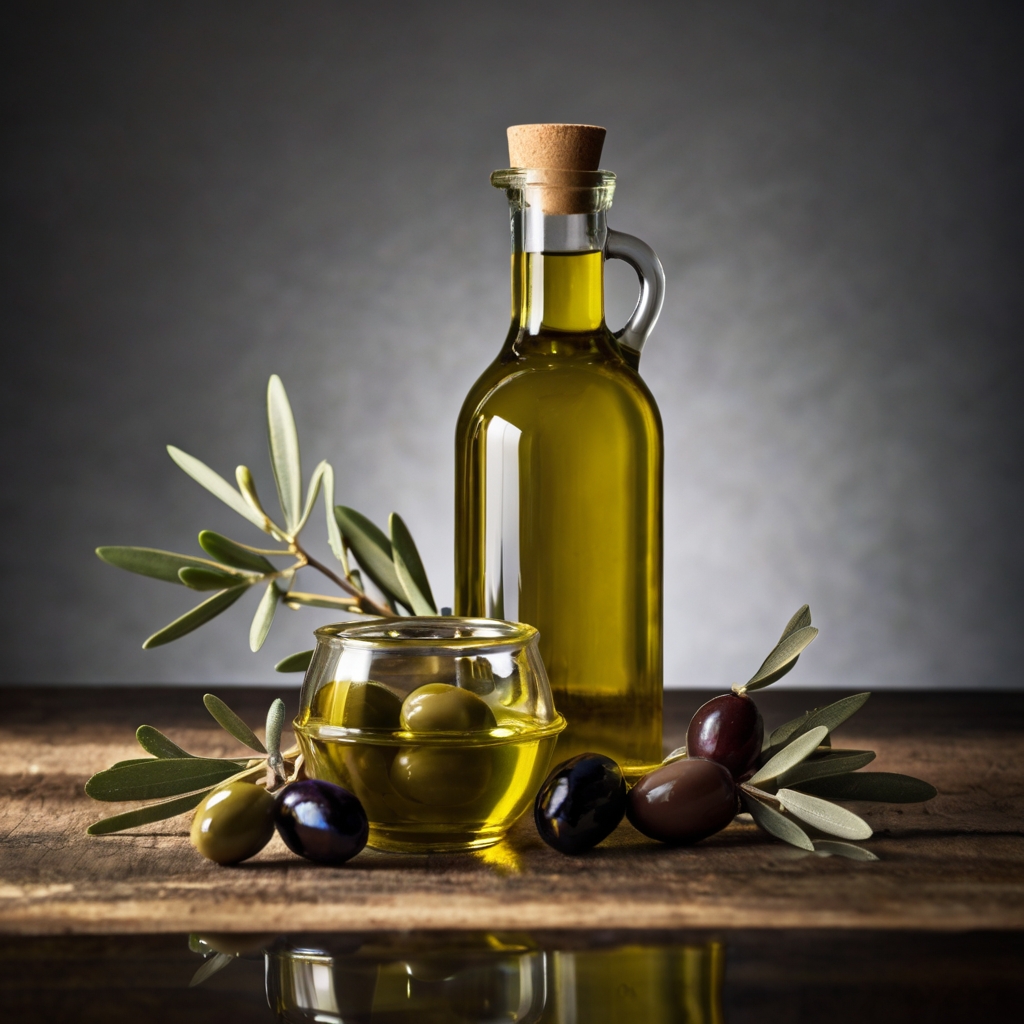What to Cook with Olive Oil: All the Details from the Best Chef

Hi, my name is Chef Marcus.
For the past 20 years, olive oil has been my secret ingredient—not just in my restaurant kitchens, but in my home, my marinades, my dressings, and even my desserts. If there’s one pantry item that deserves real attention, it’s a good bottle of olive oil. But with shelves full of options and terms like “extra virgin,” “cold-pressed,” and “light” flying around, it’s easy to get lost. So let’s break it down together.
What Is Olive Oil and Why It Matters
Types of Olive Oil (Extra Virgin, Virgin, Light, Pure)

When someone asks me, “Chef, which olive oil should I be using?” I always reply, “That depends on what you’re cooking.” Here’s a simple breakdown:
| Type of Olive Oil | Flavor Profile | Ideal Use | Notes |
| Extra Virgin Olive Oil | Bold, grassy, peppery | Dressings, finishing oils | Made from the first cold press |
| Virgin Olive Oil | Milder, slightly fruity | Sauteing, marinades | Slightly higher acidity than EVOO |
| Pure Olive Oil | Neutral, light | High-heat cooking | Often a blend; refined + virgin oil |
| Light Olive Oil | Very mild, almost flavorless | Baking, frying | Not lower in calories—“light” means taste |
Extra Virgin is what I keep on my counter at all times. It’s the most flavorful and nutritious, but it’s also more sensitive to heat—so for searing or frying, I reach for a pure or light olive oil instead.
How Olive Oil Is Made
True olive oil starts with freshly harvested olives—ideally pressed within 24 hours. The process looks like this:
- Harvesting: Ideally hand-picked, to avoid bruising the fruit.
- Washing & Grinding: Olives are crushed into a paste.
- Cold Pressing: This paste is pressed without heat to extract oil—this preserves nutrients and flavor.
- Separation: Oil is separated from water and solids.
- Bottling: Dark bottles are used to protect from light.
Many industrial oils use heat or chemicals to extract every last drop—but that sacrifices quality. Cold-pressed extra virgin olive oil is all about purity and taste.
Olive Oil Grades
Here’s how the International Olive Council classifies olive oil:
| Grade | Acidity Level | Processing Method | Flavor Quality |
| Extra Virgin | < 0.8% | Cold-pressed, no chemicals | Perfect, no defects |
| Virgin | < 2% | Cold-pressed | Slight imperfections |
| Refined | < 0.3% | Chemically processed | Neutral, bland |
| Pomace | Varies | Extracted from leftovers | Lowest grade |
Stick to extra virgin for flavor. If you’re cooking at high temps, a refined blend will work—just don’t expect fireworks on your taste buds.
Health Benefits of Olive Oil
Is Olive Oil Good for You?
Absolutely. It’s one of the healthiest fats you can cook with. Extra virgin olive oil is packed with antioxidants, Vitamin E, and monounsaturated fats that support heart health and help reduce inflammation.
As a chef who spends long hours on his feet, I always look for ways to fuel my body smartly—and olive oil has played a big part in that.
Olive Oil and Heart Health
Studies from the Mediterranean Diet—something I saw firsthand during a cooking residency in southern Italy—have shown that people who consume olive oil regularly have lower risks of heart disease and stroke. That’s because it:
- Helps reduce LDL (bad) cholesterol
- Increases HDL (good) cholesterol
- Protects blood vessels from inflammation
It’s not just tradition—it’s science-backed.
Comparing Olive Oil to Other Cooking Oils
Let’s look at how olive oil stacks up next to other popular fats:
Olive Oil vs. Avocado Oil
| Factor | Olive Oil | Avocado Oil |
| Smoke Point | 375–405°F (EVOO) | ~520°F |
| Flavor | Bold, fruity, peppery | Buttery, mild |
| Best Use | Cold dishes, sautéing | High-heat cooking |
| Nutrients | Antioxidants, polyphenols | Vitamin E, monounsaturated fats |
Verdict: Avocado oil is great for high-heat, but olive oil wins on flavor and antioxidant content.
Olive Oil vs. Butter
| Factor | Olive Oil | Butter |
| Cholesterol | 0 mg | 31 mg (per tbsp) |
| Flavor | Grassy, rich | Creamy, savory |
| Cooking | Doesn’t burn as easily | Burns fast unless clarified |
Verdict: I use olive oil for health and butter for indulgence—but often mix both for balance.
Olive Oil vs. Coconut Oil
| Factor | Olive Oil | Coconut Oil |
| Saturated Fat | 2g per tbsp | 12g per tbsp |
| Flavor | Subtle, earthy | Strong, coconut-forward |
| Health | Heart-healthy | Controversial in high doses |
Verdict: Coconut oil has its place, but olive oil is safer for daily use.
Cooking with Olive Oil
Can You Cook with Extra Virgin Olive Oil?
Yes, you absolutely can—and I do it daily. There’s a myth floating around that you should never heat extra virgin olive oil. That’s like saying you should never toast good bread. Sure, you can burn it if you’re reckless, but with care, it brings out incredible depth.
Here’s the key: medium heat is your best friend. Use EVOO for sautéing vegetables, starting sauces, or finishing meats in a skillet. Just avoid cranking the burner to high and walking away.
Best Olive Oil for Cooking vs. Finishing
Not all olive oils serve the same role. Think of them like wines—some are table wines, others are for sipping.
| Use Case | Recommended Olive Oil | Why? |
| High-heat cooking | Pure or light olive oil | Neutral flavor, higher smoke point |
| Medium-heat sautéing | Extra virgin olive oil (EVOO) | Rich flavor, good stability |
| Finishing dishes | High-quality EVOO | Adds aroma and freshness |
| Baking | Light olive oil | Neutral, doesn’t overpower |
In my kitchen, I keep at least two bottles: one robust EVOO for finishing, and a milder one for cooking. It’s like having both sneakers and dress shoes—you need both for different occasions.
Smoke Point and Heat Stability
The smoke point of olive oil depends on its purity:
- Extra Virgin Olive Oil: 375–405°F (190–207°C)
- Virgin Olive Oil: ~420°F (215°C)
- Refined/Pure Olive Oil: ~465°F (240°C)
- Light Olive Oil: ~470°F (243°C)
Now, most stovetop sautéing happens around 300–350°F, which means EVOO is just fine—as long as you’re attentive.
Chef tip: If you see the oil shimmer or smell a sharp bitterness, remove it from heat. That’s your sign it’s about to smoke.
Tips for Using Olive Oil in Everyday Cooking
Olive Oil in Salads and Marinades
A peppery extra virgin olive oil turns a boring salad into something restaurant-worthy. Here’s my go-to vinaigrette formula:
| Ingredient | Ratio |
| Extra virgin olive oil | 3 parts |
| Acid (lemon juice or vinegar) | 1 part |
| Dijon mustard | 1 tsp (optional emulsifier) |
| Salt + pepper | To taste |
I use this for marinating meats too—especially chicken thighs and flank steak. The olive oil carries the flavor deep into the meat.
Roasting and Grilling with Olive Oil
Before anything hits the oven or grill, I toss it in olive oil. Why?
- Even cooking
- Enhanced browning
- Flavor infusion
For vegetables, don’t drown them. A light coating is all you need. Then hit them with salt, garlic powder, and maybe some smoked paprika for a Mediterranean twist.
How to Choose the Best Olive Oil
What to Look for on the Label

When I’m standing in the olive oil aisle with ten different brands staring me down, I look for a few specific details. Trust me—reading the label is everything.
Here’s a checklist I use when shopping:
| Label Detail | What It Tells You |
| “Extra Virgin” | Highest grade; unrefined, with full flavor |
| Harvest date | Fresher is better—look for oil under 12 months old |
| Dark glass bottle | Protects oil from light, helps preserve quality |
| Single origin | More traceable, often higher quality |
| Cold-pressed | Mechanically extracted without heat, retains nutrients |
Chef tip: If a label is vague or lacks harvest and bottling info—skip it. Quality producers are proud of their process and share it up front.
Country of Origin: Does It Matter?
Absolutely—but not in the way you might think.
Italy, Spain, Greece, Tunisia—all produce excellent olive oils. But country of origin only tells part of the story. Some mass-market oils blend low-quality oils from multiple countries. What matters more is traceability.
Look for:
- “Estate bottled” or “Single estate” labels
- A PDO or PGI certification (especially in European oils)
- A producer’s name or farm on the bottle
I personally love oils from Sicily, Andalusia, and Crete, but I’ve also used stunning California olive oil from small farms. Don’t chase flags—chase transparency.
Organic vs. Non-Organic Olive Oil
Here’s where it gets a little nuanced.
Organic certification means the olives were grown without synthetic pesticides or fertilizers. That’s a plus for sustainability and health, especially if you use a lot of olive oil (and I do).
But—and this is big—non-organic doesn’t always mean low quality. Many small farms follow organic practices but can’t afford the certification. If you’re unsure, research the producer or check their website.
Chef’s take: If you can find a certified organic oil with harvest and bottling info, in a dark glass bottle, and within your budget—grab it.
Cold-Pressed, First Press, Stone Milled: What Do They Mean?
Let’s break down the buzzwords:
- Cold-pressed: Mechanically extracted below 80°F (27°C). Keeps flavor and nutrients intact.
- First press: Usually redundant in modern production—EVOO is always first pressed by definition.
- Stone milled: A traditional method using granite wheels to crush olives. More romantic than revolutionary, but sometimes leads to unique flavors.
Here’s a quick visual guide for clarity:
[Infographic: Olive Oil Terminology Cheat Sheet]|Term|Meaning|Worth Paying More?|
|Cold-pressed|Extractedwithoutheat|✅ Yes|
|Firstpress|Marketing term—standardforEVOO|❌Notnecessary|
|Stone milled|Traditionalmethod, rare but artisanal|✅ If you love niche oils|
Final thought from Chef Marcus: The best olive oil is one you’ll use often, love the taste of, and feel good about putting in your food. Trust your palate and find your go-to bottle.
Olive Oil Storage and Shelf Life
Does Olive Oil Go Bad?
Yes, olive oil can go bad—but not in the way milk or meat spoils. It doesn’t grow mold or smell rancid overnight. Instead, it oxidizes and loses its flavor and health benefits over time. Think of it like wine—but in reverse. With age, olive oil gets worse, not better.
In my kitchen, I treat olive oil like a fresh ingredient. If it’s been open for more than 6 months, especially if it wasn’t stored properly, I move on.
How to Store Olive Oil Properly
Here’s what I do in my restaurant—and at home:
| Do This | Not This |
| Store in a dark glass bottle | Use a clear or plastic bottle |
| Keep it in a cool, dark cupboard | Leave it near the stove or windowsill |
| Use an airtight pour spout | Let air in after each use |
Chef tip: The ideal temperature is 57°F to 70°F (14°C to 21°C). Think wine cellar—not kitchen counter.
Signs of Spoiled Olive Oil
Here’s how I test oil before cooking:
- Smell it: If it smells like crayons, old peanuts, or even glue—it’s gone rancid.
- Taste it: Bitter is good. Sour or waxy is not.
- Look at the color: Dark golden-green is typical. If it’s pale or cloudy without being cold—it may be oxidized.
Chef’s rule: If you wouldn’t dip fresh bread in it, don’t cook with it.
Can You Freeze Olive Oil?
Yes, you can—but I rarely recommend it unless you’re storing large quantities for later use. Freezing helps preserve nutrients and flavor, but it also:
- Makes it harder to portion
- Slightly changes the texture
- Takes time to thaw properly
If you do freeze it, use silicone ice cube trays and thaw only what you need.
Using Olive Oil in Recipes
Best Recipes Using Olive Oil
Here are four of my go-to recipes that highlight the depth and character of a great EVOO:
Olive Oil Cake
Light, moist, and subtly fruity—perfect with citrus zest or almonds.
Ingredients:
- 1 cup extra virgin olive oil
- 3 eggs
- ¾ cup sugar
- 1 cup almond flour
- 1 cup all-purpose flour
- Zest of 1 lemon
Bake at 350°F (175°C) for 40–45 minutes. Serve with berries.
Mediterranean Salad with Olive Oil Dressing
A vibrant, crunchy mix with EVOO shining through the vinaigrette.
Dressing:
- 3 tbsp olive oil
- 1 tbsp red wine vinegar
- 1 tsp Dijon mustard
- Pinch of oregano
- Salt & pepper to taste
Garlic Olive Oil Pasta
So simple. So satisfying. Ready in 10 minutes.
Ingredients:
- 8 oz spaghetti (al dente)
- ¼ cup EVOO
- 4 garlic cloves, thinly sliced
- Red chili flakes (optional)
- Fresh parsley
Sauté garlic in oil, toss with pasta and herbs.
Homemade Olive Oil Mayonnaise
Rich, creamy, and completely different from store-bought.
Blend together:
- 1 egg yolk
- 1 tsp Dijon mustard
- 1 tbsp lemon juice
- ¾ cup olive oil (slow drizzle while blending)
- Salt to taste
Olive Oil in Baking: When and How to Use It
EVOO works beautifully in cakes, muffins, and quick breads. I use it whenever I want:
- A moist crumb
- A slightly fruity or herbal note
- An alternative to dairy or butter
Chef’s tip: Use light-tasting EVOO in recipes where you don’t want an assertive olive flavor. But when paired with citrus, nuts, or herbs—let it sing.
Olive Oil Myths and Facts
Is Cooking with Olive Oil Toxic?
No, no, and no again.
The myth comes from the idea that olive oil “burns” at low temperatures. But good-quality extra virgin olive oil has a smoke point of 375–410°F (190–210°C)—plenty high for sautéing, roasting, and even baking.
As long as you don’t overheat it, olive oil is perfectly safe—and packed with antioxidants that protect it during cooking.
Does All Olive Oil Taste the Same?
Not even close.
Tasting olive oil is like tasting wine. There are notes of:
- Grass
- Artichoke
- Almond
- Pepper
- Tomato leaf
- Even green banana
Try a flight of three different oils. You’ll see how distinct they are. Some are mild and buttery, others peppery and bold.

Pro move: Pour a little in a wine glass, warm it with your hand, and inhale deeply. Then take a small sip. You’ll never go back to “just any” oil again.
Can You Fry with Extra Virgin Olive Oil?
Yes, you can—and I do.
Shallow-frying or pan-frying with EVOO adds flavor that other oils just can’t match. Just don’t let it smoke. Medium heat is your friend.
For deep frying, I’ll often switch to refined olive oil, which has a higher smoke point and neutral flavor. But EVOO for eggs, fish, and vegetables? Absolutely.
15+ Frequently Asked Questions about Olive Oil
1. What’s the difference between virgin and extra virgin olive oil?
Extra virgin is made from the first cold press, with no chemicals or heat. It’s the purest and most flavorful. Virgin is slightly lower in quality and acidity but still unrefined.
2. Can I use olive oil for frying?
Yes. Use extra virgin for pan-frying and sautéing at medium heat. For deep frying, go with refined olive oil for higher smoke points.
3. What’s the smoke point of olive oil?
Extra virgin: 375–410°F (190–210°C)
Refined olive oil: 465°F (240°C)
4. Does olive oil lose nutrients when heated?
Slightly, but it still retains more antioxidants than most oils even after cooking. Use gentle heat to keep the goodness intact.
5. What’s the best olive oil for salad dressing?
Extra virgin, always. Look for fruity or peppery oils—those bring depth to vinaigrettes.
6. What causes olive oil to solidify in the fridge?
Natural fats. It’s totally normal—just let it return to room temperature before use.
7. Can olive oil go bad?
Yes. Use it within 12–18 months of harvest and 6 months after opening.
8. Should olive oil be refrigerated?
Not unless your kitchen is very warm. Store it in a cool, dark place—like a pantry or cupboard.
9. What does “cold-pressed” really mean?
It means no heat over 27°C (80°F) was used during extraction, preserving more flavor and nutrients.
10. Is olive oil healthier than butter?
Yes—olive oil is rich in monounsaturated fats and antioxidants, while butter is high in saturated fats.
11. Why does my olive oil taste spicy or bitter?
That’s a good thing! It means it’s fresh and full of polyphenols—natural antioxidants.
12. What is “light” olive oil?
Not lower in calories. “Light” refers to flavor, not fat. It’s refined and bland—not my go-to choice.
13. Can I use olive oil on my skin?
Absolutely. It’s moisturizing and full of vitamin E. But test on a small patch first.
14. What’s the best country for olive oil?
Italy, Greece, Spain, and Tunisia all make incredible oils. I choose taste and quality over geography.
15. Is cloudy olive oil bad?
Not at all. It could be unfiltered or just cold. Let it sit at room temperature to clear up.